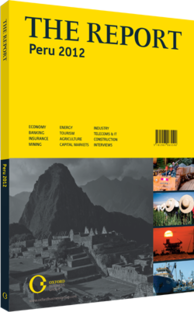Modernising tradition: Lima’s Gamarra district is making a name for itself in textiles
With a radius of 24 square blocks located in the heart of downtown Lima, Gamarra is the capital city’s most important textiles emporium, both for production and retail. According to the Inter-American Development Bank, 150 galleries house more than 14,000 companies that either produce or sell textiles and apparel in Gamarra, providing work for 90,000 people. Municipal figures estimate the emporium receives some 100,000 visitors daily, with yearly turnover of around $1bn.
According to Óscar Chávez, a senior economist at Lima’s Chamber of Commerce, “Everyone buys textiles there. It is an indicator of textile production and sales in Lima.” Everything from basic T-shirts and sports apparel to high-end clothing trends and traditional garments, such as colourful alpaca sweaters, can be found in Gamarra. Promoting fashion is also a key strategy to boost the area’s sales and the textiles industry in general. Perú Moda, an annual international fashion fair, has been bringing top international companies to Lima for the past 15 years to boost exposure abroad and position luxury Peruvian textiles in key markets. Around 40% of products from Gamarra go for export while the rest are destined for the domestic market.
As a mesh between formal and informal economies, Gamarra is often viewed as lacking a certain level of organisation. However, a recently formed board of the 13 largest companies operating in the area seeks to bring more formality to the centre. Major investments in Gamarra also have a hand to play in this effort, primarily with regard to the provision and availability of adequate infrastructure in relation to retail demand.
GREATER ACCESS: In July 2012 construction is expected to begin on a massive underground parking project in the district involving investment of around $15m, and a recently constructed metro route will allow more people to access the emporium, furthering economic exchange and growth. The importance of developing infrastructure to support the district’s growth, such as the expanded transport links, has led to talk of introducing a law that would require the representing board of companies to donate a portion of their profits to help fund further municipal improvements.
COMPETITION: A potential challenge to Gamarra is the introduction of cheaper imports brought about by Peru’s growing list of free trade agreements (FTAs). According to Chávez, however, Lima’s textile industry is not in danger of suffering from potential competition with the arrival of cheaper products. “When Peru signed an FTA with China, a sense of worry swept through Gamarra,” Chávez told OBG. “But more than two years have passed since this agreement was signed and only 16% of Chinese imports are end-consumer goods, so the industry was not affected.”
QUALITY BRAND: In fact, Chávez argues that Peru’s FTA with China has indeed been beneficial, fostering the import of modern machinery and technology. Due to the industry’s use of high-quality raw materials, Peru has successfully positioned itself in the premium segment, an area in which China is not seeking to work. International brands, such as Armani, Donna Karan, D&G, Tommy Hilfiger and Lacoste, use Peruvian factories to produce finished garments. The cost per unit produced in this segment exceeds $8, while everything below that mark is manufactured in lower-cost markets, such as China, India, Turkey, Thailand or Bangladesh.
Like many previous urbanisation developments in Lima, Gamarra began spontaneously with informal vendors and small textile companies. However, after some 40 years of existence, it has proven to be the motor behind Lima’s textiles industry – and a significant contributor to the overall economy. The sector’s evolution towards supplying high-end clothing brands has helped it adapt to the changes in the purchasing habits of Peruvian consumers as purchasing power has risen, as well as to tap into lucrative export markets. As domestic and foreign demand grow, Gamarra must attempt to become more organised in order to improve efficiency and draw more consumers, domestic and foreign alike, into its gates, which offer a point of access to this traditional industry that has become increasingly modern.
You have reached the limit of premium articles you can view for free.
Choose from the options below to purchase print or digital editions of our Reports. You can also purchase a website subscription giving you unlimited access to all of our Reports online for 12 months.
If you have already purchased this Report or have a website subscription, please login to continue.

